In her Downtown Los Angeles studio, the furniture designer Sam Klemick spends hours hovering over a Douglas fir beam, sweeping the ragged surface with her beloved metal detector for gleaming heads of screws or broken nails. She will spend nearly as much time later on teasing out those scraps with her cat’s claw — a type of pliers — before she repurposes the beams into otherworldly coffee tables, chairs and stools with cartoonish, bell bottom-shaped legs.
What began in 2019 as a hobby reworking old furniture found on the side of the road has evolved into something more meaningful for the knitwear and clothing designer.
She isn’t alone: Klemick is one of a number of female artisans who have turned to woodwork to express themselves in a world traditionally dominated by men. Stephen Markos, founder and director of the New York-based Superhouse gallery, featured the US furniture maker and artist Wendy Maruyama in an exhibition called Blurring the Timeline earlier this year. In spring 2022, another Superhouse show, Ingrained, surveyed female artists working with wood in provocative ways.
To Markos’s mind, women such as Maruyama and the former Rhode Island School of Design president Rosanne Somerson paved the way for a new generation to experiment with wood. Of the shift in that older generation, he says, “my feeling is that it’s partly [due to] the educational system”. US women did not have access to “shop” class — an umbrella term for the industrial arts including wood and metalwork — until Richard Nixon signed into law gender equality legislation in the 1970s.
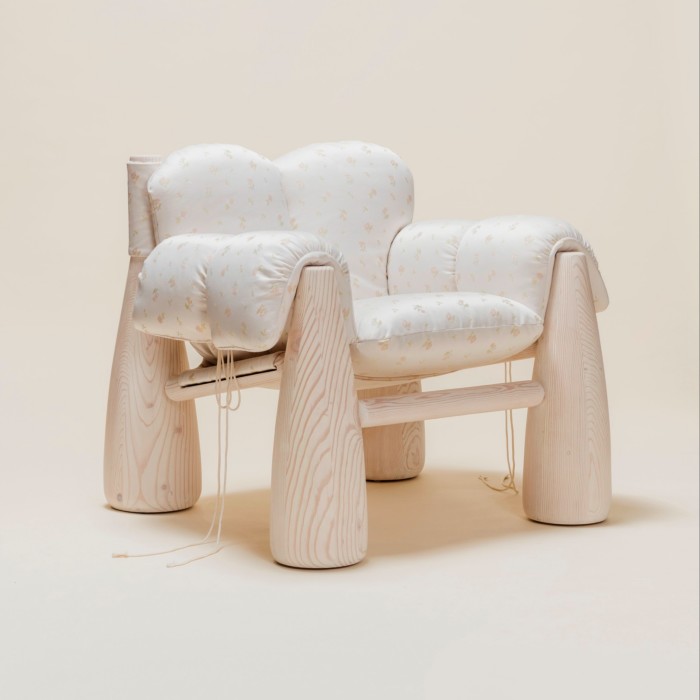




Today, in Klemick’s workshop, after stripping the wood of loose metal scraps she begins to mill the lumber, running it through a jointer and planer to get four square sides. Then the magic of furniture-making begins. If she’s making legs, she’ll laminate the lumber to get it as big as it needs to be, then turn it on the lathe; if it’s one big beam, she’ll remove the corners, put the beam on the lathe and turn that.
“As I sort through the lumber to glue things up, I have to puzzle together the pieces because there are a lot of imperfections in the wood,” says Klemick. “If something would compromise the structure or strength, that’s the judgment call.”
Superficial checks, or cracks, in the surface are allowed to stay while little nail holes are filled with gold epoxy in a subtle nod to kintsugi, the Japanese technique of mending pottery or glass. In December, Klemick will travel to her hometown of Miami to show a small side table and Bell chair made of salvaged Douglas fir as part of the Alcova group show at Design Miami (running until December 10).
For Klemick, it was seeing “the true costs of fashion” — in terms of wastefulness — in her role as a clothing designer that sparked a desire to begin making furniture by hand. At a friend’s suggestion, she enrolled in LA Woodshop, a woodworking school in Downtown Los Angeles, and she fell in love with joining and turning on the lathe. “I enjoy that things are not perfect,” she says. “There are marks of the past in the pieces themselves.”
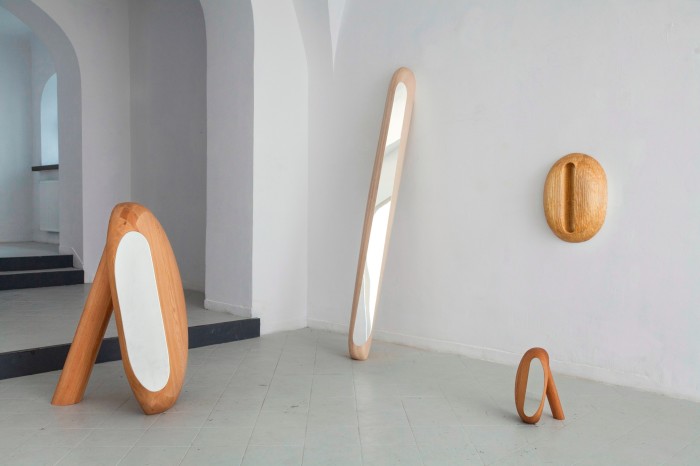



The Belgium-born, Brooklyn-based architect and designer Kim Mupangilaï debuted her collection of wooden furniture in a solo exhibition, Hue I Am / Hue Am I, at Superhouse in June.
“It’s very non-traditional-looking furniture,” she says. “Every little curve stems from something, but it’s all about the nuances and little subtle details. The carpenters were intimidated since they had never done this before.”
Built using materials often used or grown in the Democratic Republic of Congo — banana fibre, teak wood, raffia and rattan — the pieces began as loose hand sketches, which Mupangilaï rendered in AutoCAD and 3D Max software to assess their function. She worked closely with the carpenters on every detail, “from mechanism to stain” and how each piece should be built.
A long-held desire to connect with her Congolese heritage, from which she felt alienated as a biracial girl growing up in Belgium, compelled her to research her father’s old books on the region. She felt drawn to the tools and other sculptural pieces that were historically used as currency to trade everyday items as well as for major transactions such as land, and she sought to develop “a new design language” in response.
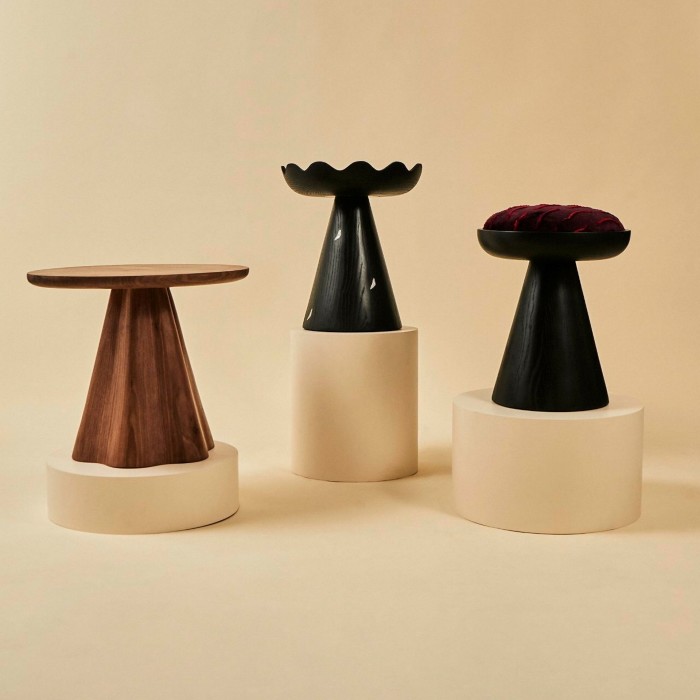



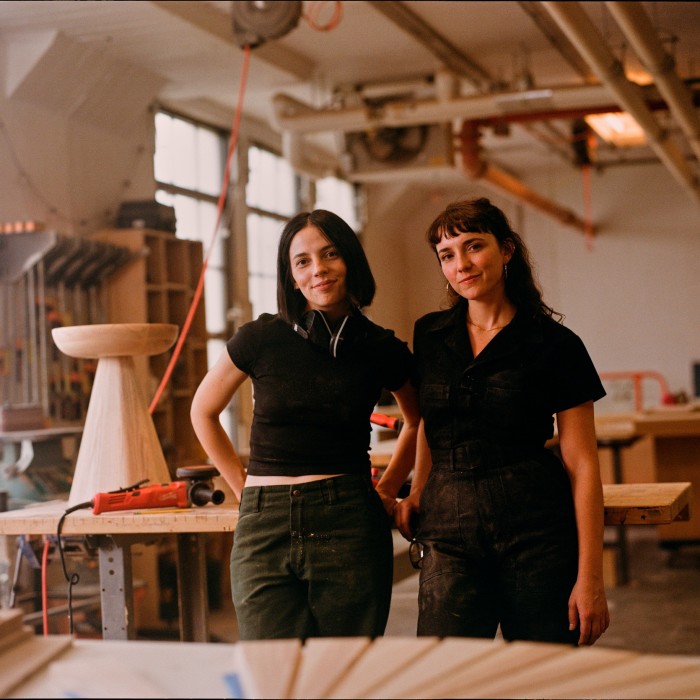



For Superhouse’s exhibit at Design Miami, Mupangilaï is making a floor lamp whose cloudlike banana fibre shade references pre-colonial hairstyles worn by African women.
In Brooklyn’s Sunset Park, the furniture makers Alexis Tingey and Ginger Gordon, who work under the moniker Alexis & Ginger, also celebrate women. Old black-and-white photographs by the Surrealists and scans of embroidery and weaving inform their sculptural designs, which pay homage to what Gordon calls “traditional female crafts”. Fanciful flourishes — small mother of pearl inlays, the carefully scalloped edges of a dyed ash side table and the undulating waves of a maple mirror frame — nod to their upbringing in homes where such crafts were the dominant pastime.
For their first collection, “The Ode”, presented this spring at Colony Gallery in New York, the pair draped layer upon layer of hand-sculpted fabric on a steel frame, which they fastened with a strand of steel pearls. “We have really carried those details and what they meant to us into the pieces that we create,” says Gordon. “We’re always playing with material, trying to explore it and push it and see what arrives.”
The process of exploring the material can reveal a wood’s distinct peculiarities, and for the Polish artist Anna Bera, it offers creative freedom. Raised in a small village in the ancient Świętokrzyskie Mountains, densely forested with beech and fir, the granddaughter of a carpenter has been working with wood since she was 14. Now based in Warsaw, she likens her “functional objects” — such as solid beam-shaped mirrors in honey-coloured red oak and sycamore — to “meteorites that fell to earth suddenly and without justification”.
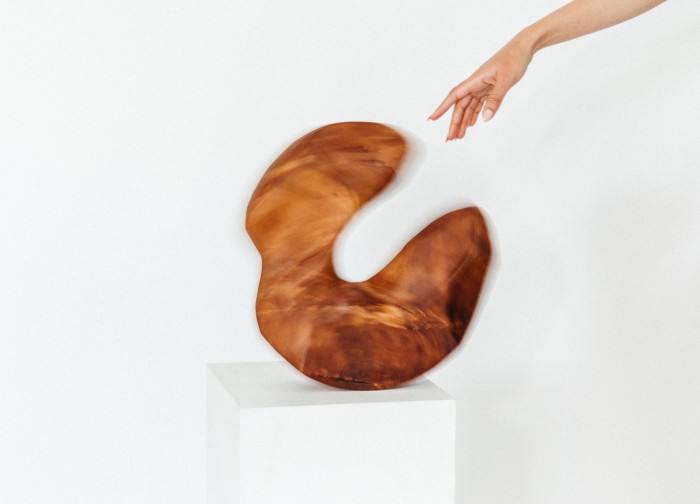



Bera has an eye condition that affects her three-dimensional vision, so she relies on her other senses to perceive her work. “I check everything by touch,” she says, “from the shape of the object to the details.” She also uses technical sketches and 3D models to help her solve construction problems.
Once Bera has secured a tall post to the wall, she spends weeks carving it into an undefined shape using an electric plane and angle grinder, followed by a hand plane and sander. The work is physically taxing, which is precisely what she loves about it. For her, she says, the joy of discovery is in the process of making the object.
Pooja Pawaskar, a Mumbai-born artist based in Ottawa, Canada, finds beauty in the objects themselves, particularly their imperfections — cracks, burls, knots and tangled grains. Having watched her paternal grandfather whittle wood in her childhood, she now sculpts spalted mahogany, imported mostly from Florida, into tactile rocking sculptures.
A solo display, held at the New York headquarters of the architecture practice Gensler last year, featured these sculptures, whose soothing rhythmic movement was inspired by waves she saw crashing against the chalk-white cliffs of Rosh HaNikra kibbutz in Israel. “I wanted to almost honour that motion of the water and imbue that into these sculptures,” she says.
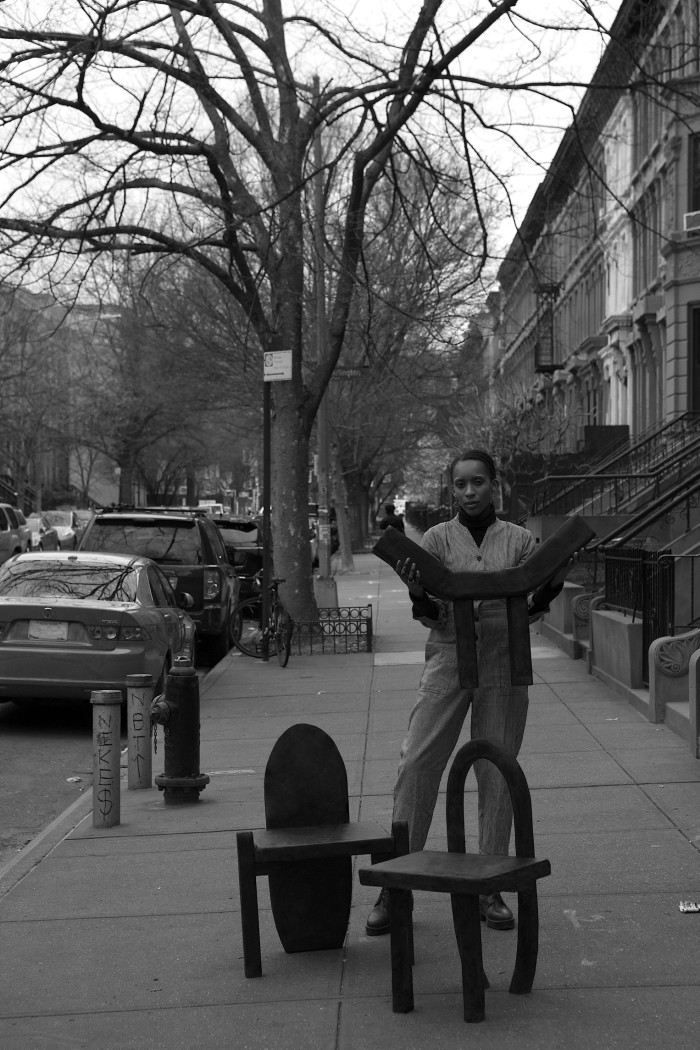



Brooklyn artist Nifemi Ogunro is drawn to movement, if only in the way viewers choose to engage with her artful “functional sculptures”. The notion of space plays an important role, too, as New York’s narrow hallways and crowded subways have informed her perception of moving through space.
In December, she will show a handcrafted open-back chair, inspired by the tension between softness and boxiness, as part of Side Gallery’s presentation at Design Miami.
Her work has a duality to it, in that her sculptures serve a very real purpose while at the same time challenging viewers’ perceptions. “I want the pieces I create to have their own identity, for you to look at them and have some sort of question,” she says. “I can’t really control how people engage with the work that I make, and I don’t want to — that’s the fun part.”
Woodwork has given Ogunro an outlet for self-expression, as it has for Klemick, Mupangilaï, Tingey and Gordon, Bera and Pawaskar. These women relish bringing the element of surprise to the craft. And like the best artists, they aren’t afraid to go against the grain.
Find out about our latest stories first — follow @FTProperty on X or @ft_houseandhome on Instagram
This post was originally published on this site be sure to check out more of their content.








